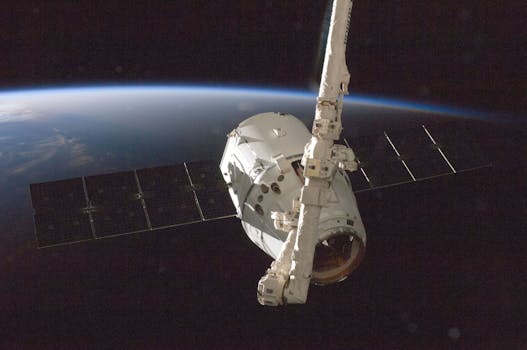
LEO Satellites Revolutionizing Global Connectivity – LEO Satellites
LEO satellites are at the forefront of a revolution in global connectivity, providing faster and more reliable internet access to people around the world. These satellites, orbiting the Earth at an altitude of approximately 160 to 2,000 kilometers, are designed to offer low-latency and high-speed connectivity, making them an attractive solution for a wide range of applications, from telecommunications and navigation to Earth observation and scientific research.
How LEO Satellites Work
LEO satellites are launched into space and placed into a low Earth orbit, where they can complete one rotation around the Earth in about 90 minutes. This proximity to the Earth’s surface allows for faster and more reliable communication, as signals have to travel shorter distances, resulting in lower latency and higher speeds. Each LEO satellite is equipped with advanced technology, including transponders, antennas, and solar panels, which enable them to receive, amplify, and retransmit signals back to Earth. The signals are then received by ground stations or user terminals, which can be connected to the internet, telephone networks, or other communication systems.
Benefits of LEO Satellites
The benefits of LEO satellites are numerous, and they are poised to play a critical role in bridging the digital divide and providing global connectivity. Some of the key advantages of LEO satellites include:
Faster speeds: LEO satellites can offer speeds of up to 1 Gbps, making them suitable for applications that require high-bandwidth, such as video streaming and online gaming.
Lower latency: The proximity of LEO satellites to the Earth’s surface results in lower latency, which is essential for real-time applications, such as video conferencing and online gaming.
Global coverage: LEO satellites can provide coverage of the entire Earth’s surface, including remote and underserved areas, making them an ideal solution for global connectivity.
Applications of LEO Satellites
LEO satellites have a wide range of applications, including telecommunications, navigation, Earth observation, and scientific research. Some of the key applications of LEO satellites include:
Telecommunications: LEO satellites can provide internet access, voice and data services, and other telecommunication services to remote and underserved areas.
Navigation: LEO satellites can provide location information and timing signals, which are essential for navigation systems, such as GPS.
Earth observation: LEO satellites can be equipped with sensors and cameras to monitor the Earth’s surface, providing valuable data on weather patterns, climate change, and natural disasters.
Challenges and Future Developments
While LEO satellites offer numerous benefits, there are also challenges and limitations associated with their development and deployment. Some of the key challenges include:
Regulatory frameworks: The deployment of LEO satellites is regulated by national and international authorities, which can create complexities and uncertainties for satellite operators.
Interference: The increasing number of LEO satellites in orbit can result in interference with other satellites and ground-based systems, which can impact their performance and reliability.
Debris: The growing number of LEO satellites in orbit also raises concerns about space debris, which can pose a risk to other satellites and spacecraft.



